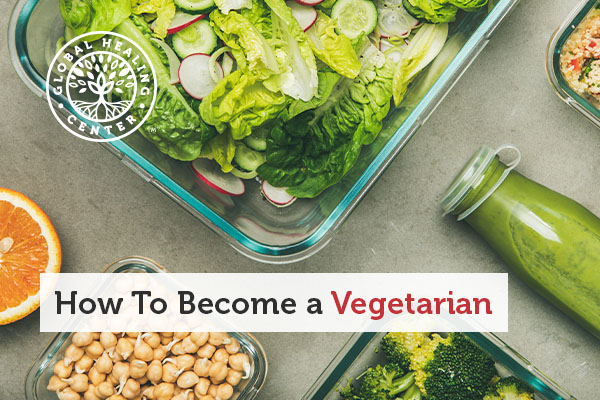
Becoming a vegetarian is a process you can begin in steps. That may be good news if you're concerned about radical diet changes, which, while many people do, can also be difficult to maintain. It is typically easier to transition into a new lifestyle than implement a massive shift in your daily routines. Especially when it concerns eating, which is perhaps our most fundamental routine. Transitioning to a vegetarian diet in steps allows you to handle the cravings for meat, which you're likely to experience if you've been a hearty meat eater all your life. If you're less enthused about meat, it's less of a chore to go without.
5 Steps to Become a Vegetarian
Step 1: Eliminate Red Meat
The first thing to eliminate or drastically reduce (eliminate is better) is your intake of red meat. Red meat consumption poses the highest risk to your health and most people make its elimination their top priority when becoming a vegetarian, I strongly consider you to do the same. Red meat is often high in saturated fat and eating it is known to contribute to the development of a long list of health concerns, including stroke. Many people find that they can simply eat smaller portions and begin phasing it out of their diets. Other people substitute poultry and fish for beef and pork. After losing their craving for beef, they then eat only fish, and then they eventually eliminate fish as well.
Step 2: Vegetable Protein Is Your Friend
Since protein is perhaps the most desired nutrient we gain from any kind of meat, it is vital that you find at least one (but preferably a few) vegetable source of protein during this transition process. There are many sources of vegetable protein including asparagus, broccoli, and cauliflower. You might also want to experiment with protein powders from vegetable sources. Brown rice and hemp are my favorites. Nuts, especially almonds, are another fantastic source. Establishing variety is important, "almonds four times a day" is not the new routine you should adopt. Try new foods and try them all, even the ones you're iffy about. It makes the process of becoming a vegetarian much easier.
Step 3: You Can Still Enjoy Some of Your Favorite Foods
Another method many people find very easy to implement is to itemize the ingredients of their favorite meals and substitute vegetable products for meat products. Many vegetarian meat substitutes are available if you want something that tastes similar. A word of caution with respect to prepackaged vegetarian foods, don't just assume that because they're vegetarian they're also organic and GMO free, you must, and should, verify that separately.
Did you know you can make pizza crust out of cauliflower? No joke. Thanks to the Internet, it is now very easy to get a never-ending list of vegetarian recipes and food ideas simply by searching online for vegetarian dishes and vegetable substitutes for beef, chicken, or fish. There are different types of vegetarians, some eat no meat, some avoid dairy, etc. Regardless of your goals and placement in your transition, you can find delicious recipes that are appropriate for you.
Step 4: Try New Vegetarian Dishes
Enjoying new vegetarian twists on your old favorite dishes is a good idea, and so is trying completely new culinary styles. A transition to vegetarianism is a wonderful opportunity to try new dishes, styles, and various ethnic foods. Traditional Indian food, for example, is all vegetarian because of the Hindu prohibition on eating meat. So are many Chinese foods, Thai foods, and Middle Eastern foods. While these cultures may not specifically prohibit meat, they tend to consume a great deal of vegetable matter because of their reliance on local, subsistence farming and many vegetarian options exist. Many foods from rural Mexico are also high in vegetables for the same reason. Eating a variety of such foods from all over the world can be one way to make becoming a vegetarian an exercise in diversity rather than one of restrictiveness.
Step 5: Stay Focused. Vegetarian Food Helps Your Health
Always remember, too, that this is about your health. Research shows that older men who eat meat more than 6 times per week are twice as likely to suffer heart disease. Women are not as vulnerable to heart disease as men but that doesn't mean the ladies get a free pass. They too will benefit from eliminating meat and sticking with organic fruits, grains, and vegetables. I also encourage you to avoid cow’s milk and soy, instead use hemp milk, almond milk, or coconut milk as a more viable, healthy substitute.
†Results may vary. Information and statements made are for education purposes and are not intended to replace the advice of your doctor. If you have a severe medical condition or health concern, see your physician.







